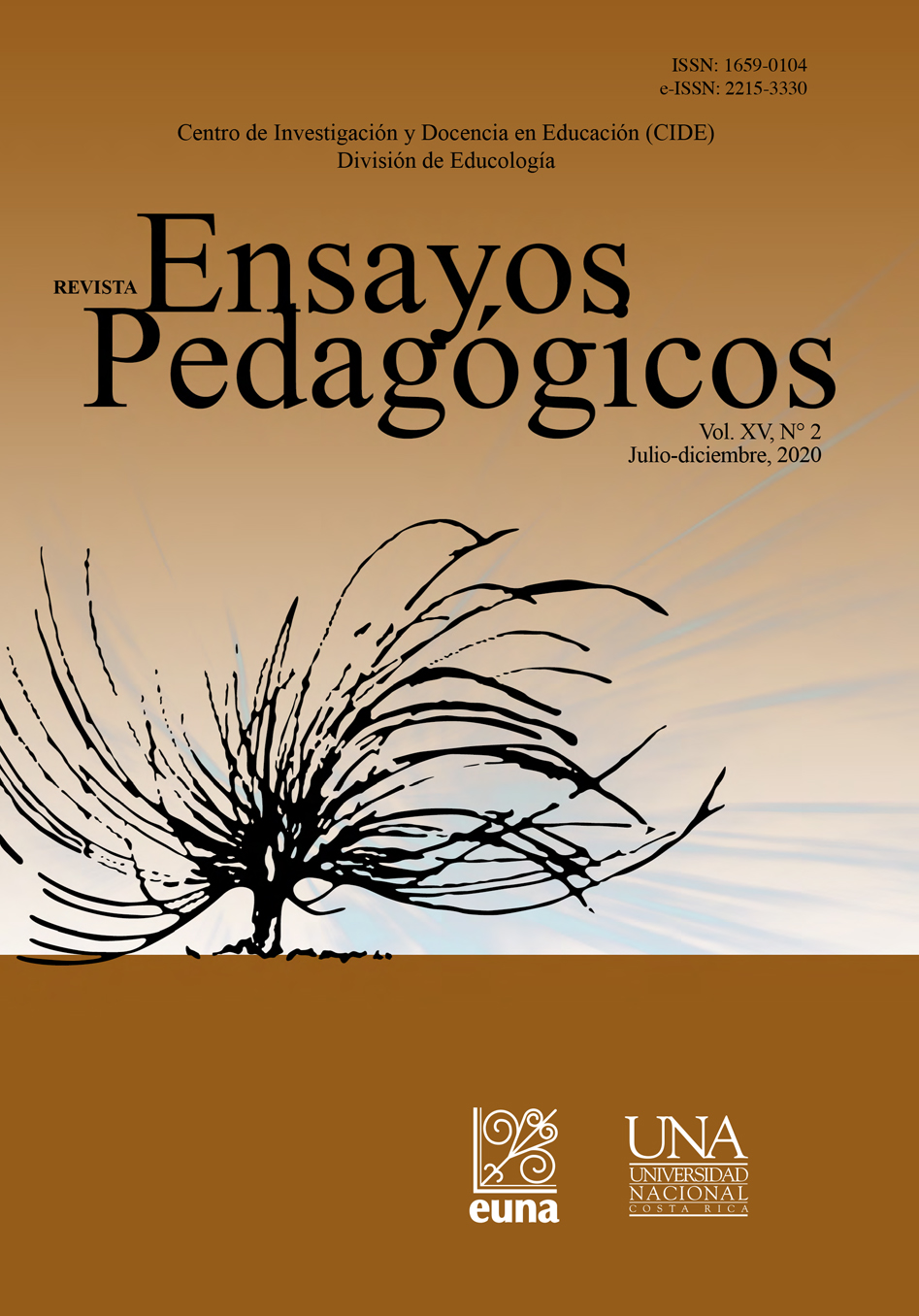Language Teaching Techniques for Pronouncing the Past Tense Phonemes /t/, /d/, and /ɪd/ in Regular Verbs When Reading Aloud
DOI:
https://doi.org/10.15359/rep.15-2.12Keywords:
pronunciation, simple past tense phonemes, simple past tense, drilling, color-coding, techniquesAbstract
This article presents the results of a research study based on two language teaching techniques, drilling and color-coding, and their effect on the correct pronunciation of the past tense phonemes /t/, /d/, and /ɪd/ in regular verbs in simple past tense when reading aloud; the population of this study was composed of twelve young adults. Qualitative and quantitative data from two instruments: an identification tally sheet and a questionnaire were gathered. The results obtained in the pre and post-test (identification tally sheet) and the performance of the participants from the experimental groups (B and C) showed that there was a positive impact on the accurate production of the past tense phonemes when reading aloud. Lastly, this research study provides evidence to claim the teaching of drilling and color-coding techniques are useful to pronounce the past tense phonemes /t/, /d/, and /ɪd/ in regular verbs correctly.
References
Brown, D. (2001). Teaching by principles: An interactive approach to language pedagogy. New York: Longman.
Celce-Murcia, M., Brinton, D., Goodwin, J. M., & Griner, B. (2010). Teaching pronunciation: A course book and reference guide. United States: Heinle and Thomson Learning.
Cherry, D. (2002). Experimenting with the sound/color chart for pronunciation. Bulletin of Hokuriku University, 26, 219-235. Retrieved from http://www.hokuriku-u.ac.jp/about/campus/libraryDATA/kiyo26/gai12.pdf
Creswell, J. (2003). Research design: Qualitative, quantitative, and mixed methods approaches (2nd ed.). California: Sage Publications.
Cruz, N. (2013). The importance of promoting pronunciation strategies for regular verbs in simple past. México: Universidad Veracruzana. Retrieved from http://cdigital.uv.mx/bitstream/123456789/35130/1/cruzcastillonora.pdf
Forel, C. & Puskás, G. (2005). Phonetics and phonology. Switzerland: University of Geneva. Retrieved from https://www.uni-oldenburg.de/fileadmin/user_upload/anglistik/personen/cornelia.hamann/Phonology.pdf
Gattegno, C. (1963). Teaching foreign languages in schools the Silent Way. New York: Educational Solutions. Retrieved from https://issuu.com/eswi/docs/gattegno_-_teaching_foreign_languages_in_schools_t
Handoko, K. & Mindari, R. (2016). Using drilling to teach pronunciation to the seventh graders (Undergraduate thesis). Widya Mandala Catholic University Surabaya, Indonesia. Retrieved from http://repository.wima.ac.id/6424/
Hernández, S., Fernández, R., & Baptista, L. (2006). Metodología de la investigación (4ta Edición). México: McGraw-Hill Interamericana.
HerrelI, A., & Jordan, M. (2004). 50 Strategies for teaching English language learners. California: California State University.
Kelly, G. (2000). How to teach pronunciation. Essex: Longman
Mackintosh, H. (1965). Current approaches to teaching reading. Washington D. C.: National Education Association.
Marín, I. (2008). Drilling and color-coding systems: A comparative analysis of two pronunciation techniques to improve L2 learners’ production of the -(e)d inflectional ending. Filología y Lingüística 34(2), 143-163. Retrieved from http://revistas.ucr.ac.cr/index.php/filyling/article/view/1297/1360
Richards, J. & Rodgers, T. (2001). Approaches and methods in language teaching. New York: Cambridge University Press. doi: http://dx.doi.org/10.1017/CBO9780511667305
Rodríguez, M. (2016). Errores frecuentes en la pronunciación inglesa del pasado de los verbos regulares. Educación, Arte, Comunicación: Revista Académica Investigativa y Cultural, 6(1), 8-17.
Speak Method. (n. d.). Common verbs: Pronunciation of ed in past tense. Retrieved from http://www.speakmethod.com/esl_advanced_ed_pronunciation.html
Thomson, R. & Derwing, T. (2014). The effectiveness of L2 pronunciation instruction: A narrative review. Applied Linguistics 36(3), 326-344. doi: http://dx.doi.org/10.1093/applin/amu076
Villalobos, N. (2008). Using songs to improve EFL students’ pronunciation. Letras 2(44), 93-108. Retrieved from http://www.revistas.una.ac.cr/index.php/letras/article/download/264/218
Wei, M. (2006). A literature review on strategies for teaching pronunciation (Report No. ED491566). United States: University of Maryland.
Zaroh, M. & Laksmi, E. (2013). A Descriptive study on the teaching of pronunciation using drilling to the fourth graders of Min Malang 1. Jurnal Online, Universitas Negeri Malang 3(1), 1-5. Retrieved from http://jurnal-online.um.ac.id/data/artikel/artikelC6035D05F2069D6EF51859F50AEFE5B2.pdf
Downloads
Published
How to Cite
Issue
Section
License
Ensayos Pedagógicos is subscribed to the Attribution-NonCommertial-NoDerivatives 4.0 International Creative Commons Licence, which allows both authors and readers to freely download, store, copy, and distribute the final approved publisehd version of the manuscript (post-print) as long as this is done without commercial purposes, no derivative works are generated, and the source and author are mentioned. As well, Ensayos Pedagógicos declares that authors will remain the rightful owners of the copyrights of their work in perpetuity.







